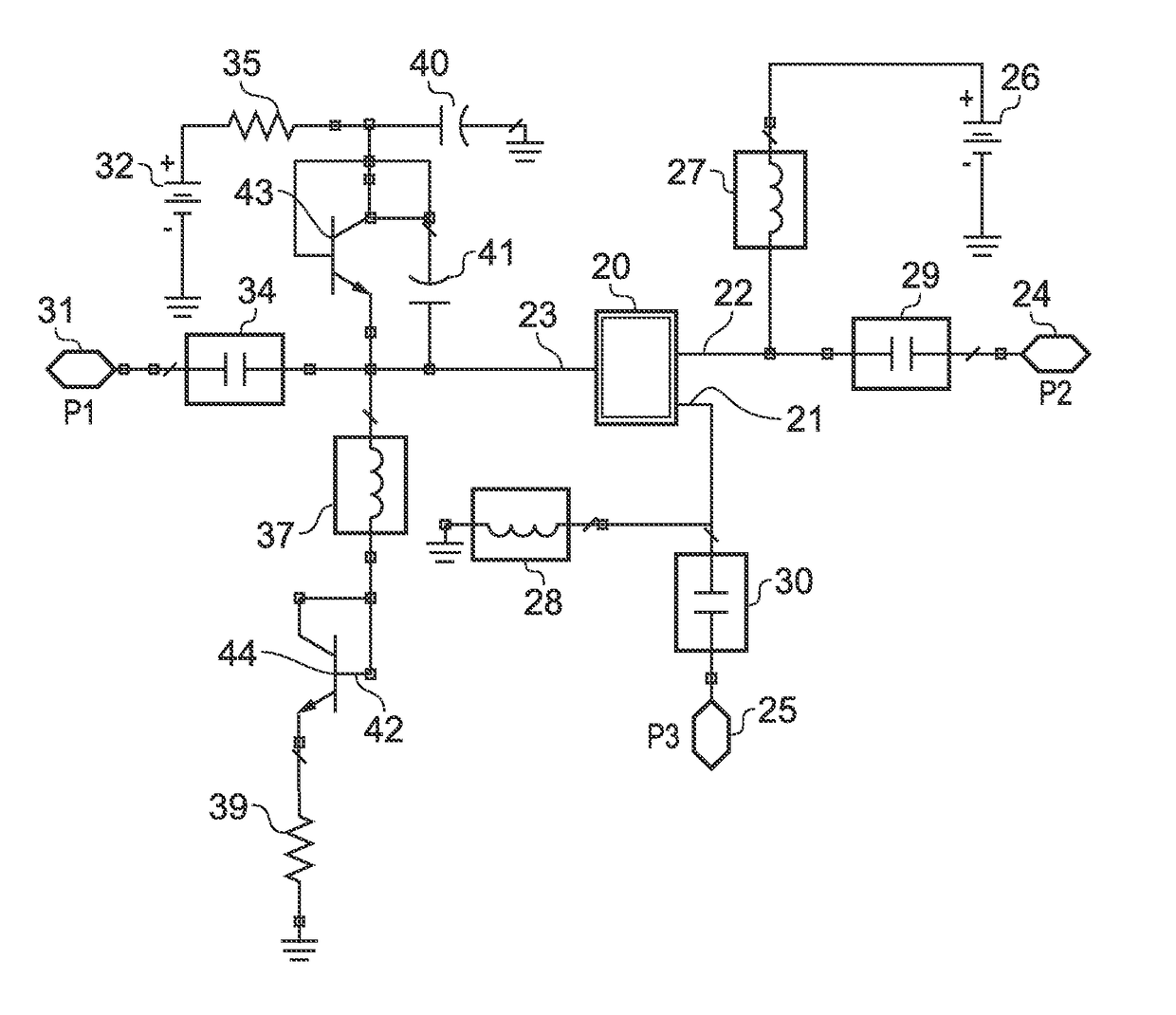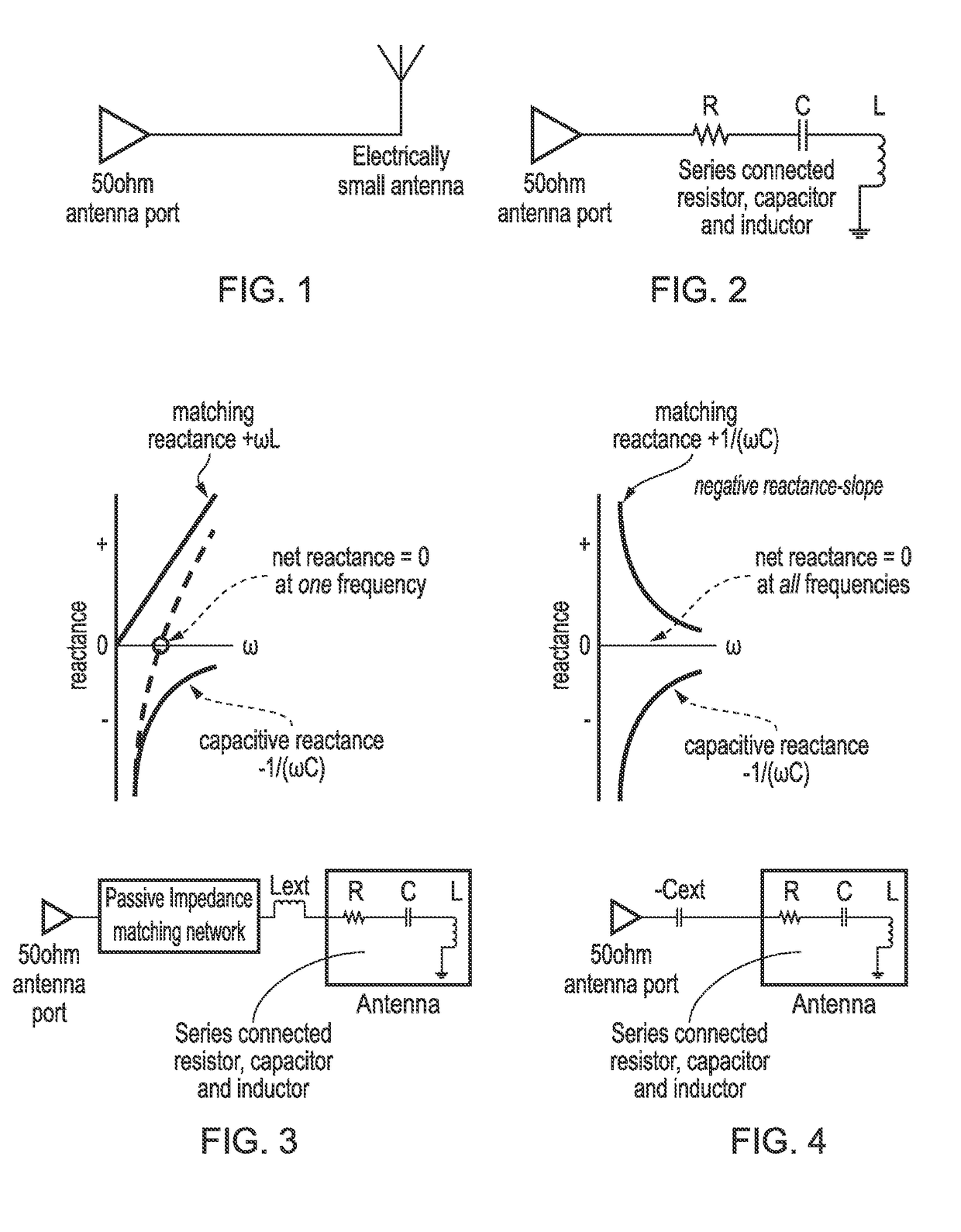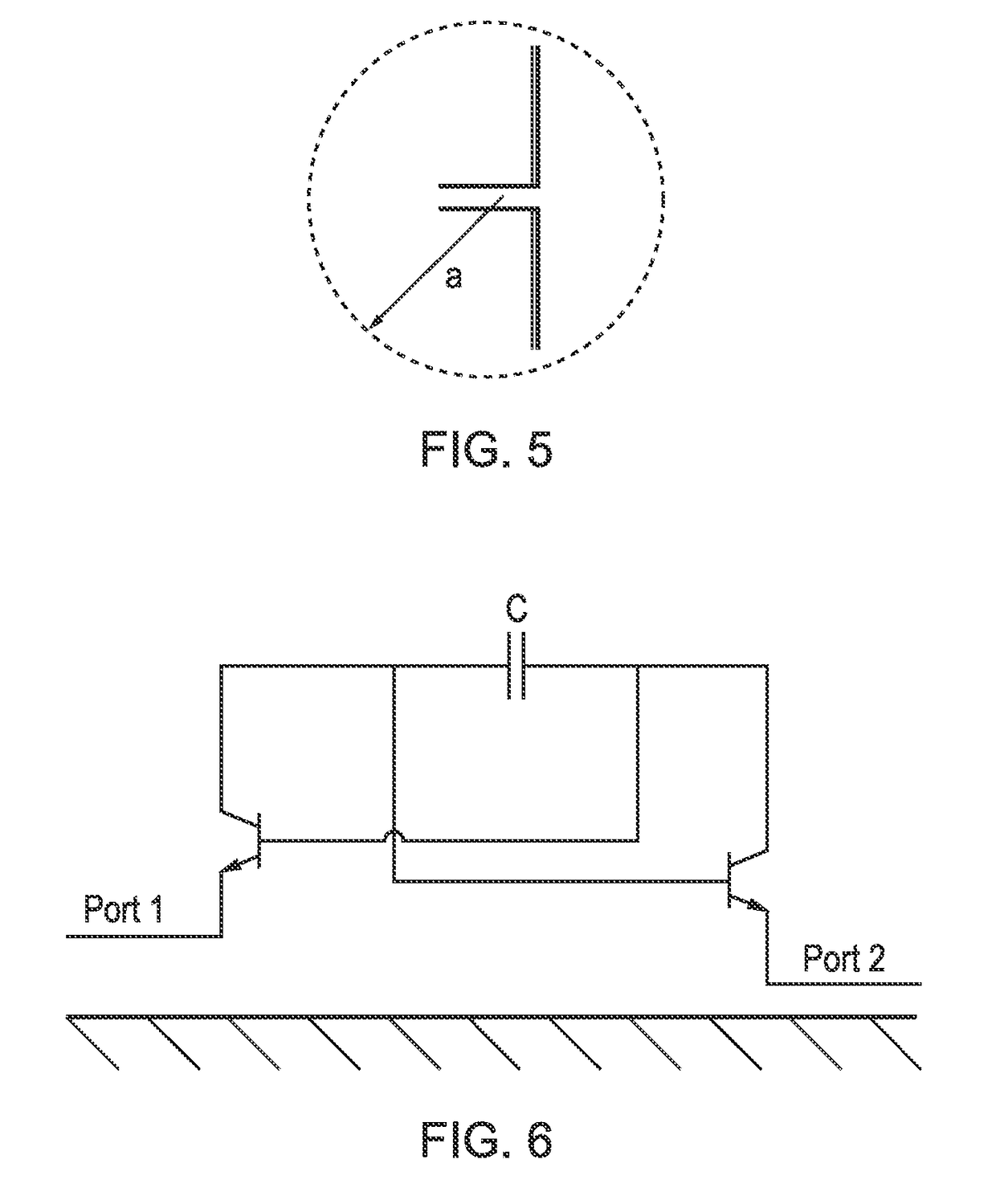Linearized negative impedance converter matching circuits and impedance adjustment circuit for a negative impedance converter
a negative impedance converter and matching circuit technology, applied in the direction of impedence converters, multiple-port active networks, impedence matching networks, etc., can solve the problems of reducing antenna efficiency, reducing total efficiency, and reducing antenna radiation resistance, so as to improve in-band matching performance and improve total efficiency and return loss, avoid excessive negative resistance, the effect of strengthening the adjustment
- Summary
- Abstract
- Description
- Claims
- Application Information
AI Technical Summary
Benefits of technology
Problems solved by technology
Method used
Image
Examples
Embodiment Construction
[0076]FIG. 10 illustrates an embodiment comprising an NIC-based matching circuit for an electrically small antenna. The circuit comprises an output termination 1, a two-port antenna model 2, a neutralization inductor 3, an NIC block 4, a capacitor 5 for impedance transformation and an RF source 6.
[0077]FIG. 11 shows the NIC block 4 in more detail, the NIC including an input port 7 connected to the emitter or source port P3 of a first transistor sub-circuit 9, and an output port 8 connected to the emitter or source port P3 of a second transistor sub-circuit 10. The transistor sub-circuits 9, 10 are connected in a cross-over configuration, with the base or gate port P1 of the first transistor sub-circuit 9 connected to the collector or drain port P2 of the second transistor sub-circuit 10, and the collector or drain port P2 of the first transistor sub-circuit 9 connected to the base or gate port P1 of the second transistor sub-circuit 10. A capacitor 100 and a lossy inductor 101 are c...
PUM
 Login to View More
Login to View More Abstract
Description
Claims
Application Information
 Login to View More
Login to View More - R&D
- Intellectual Property
- Life Sciences
- Materials
- Tech Scout
- Unparalleled Data Quality
- Higher Quality Content
- 60% Fewer Hallucinations
Browse by: Latest US Patents, China's latest patents, Technical Efficacy Thesaurus, Application Domain, Technology Topic, Popular Technical Reports.
© 2025 PatSnap. All rights reserved.Legal|Privacy policy|Modern Slavery Act Transparency Statement|Sitemap|About US| Contact US: help@patsnap.com



